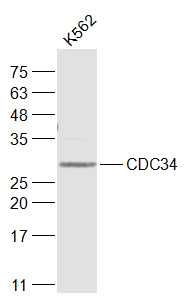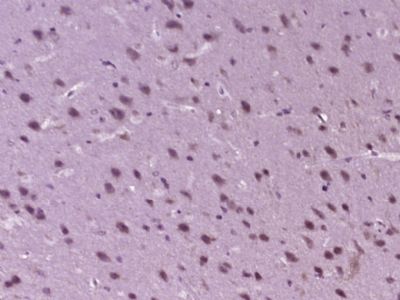Accepts ubiquitin from the E1 complex and catalyzes its covalent attachment to other proteins. In vitro catalyzes 'Lys-48'-linked polyubiquitination. Cooperates with the E2 UBCH5C and the SCF(FBXW11) E3 ligase complex for the polyubiquitination of NFKBIA leading to its subsequent proteasomal degradation. Performs ubiquitin chain elongation building ubiquitin chains from the UBE2D3-primed NFKBIA-linked ubiquitin. UBE2D3 acts as an initiator E2, priming the phosphorylated NFKBIA target at positions 'Lys-21' and/or 'Lys-22' with a monoubiquitin. Cooperates with the SCF(SKP2) E3 ligase complex to regulate cell proliferation through ubiquitination and degradation of MYBL2 and KIP1. Involved in ubiquitin conjugation and degradation of CREM isoform ICERIIgamma and ATF15 resulting in abrogation of ICERIIgamma- and ATF5-mediated repression of cAMP-induced transcription during both meiotic and mitotic cell cycles. Involved in the regulation of the cell cycle G2/M phase through its targeting of the WEE1 kinase for ubiquitination and degradation. Also involved in the degradation of beta-catenin. Is target of human herpes virus 1 protein ICP0, leading to ICP0-dependent dynamic interaction with proteasomes.
Function:
Accepts ubiquitin from the E1 complex and catalyzes its covalent attachment to other proteins. In vitro catalyzes 'Lys-48'-linked polyubiquitination. Cooperates with the E2 UBCH5C and the SCF(FBXW11) E3 ligase complex for the polyubiquitination of NFKBIA leading to its subsequent proteasomal degradation. Performs ubiquitin chain elongation building ubiquitin chains from the UBE2D3-primed NFKBIA-linked ubiquitin. UBE2D3 acts as an initiator E2, priming the phosphorylated NFKBIA target at positions 'Lys-21' and/or 'Lys-22' with a monoubiquitin. Cooperates with the SCF(SKP2) E3 ligase complex to regulate cell proliferation through ubiquitination and degradation of MYBL2 and KIP1. Involved in ubiquitin conjugation and degradation of CREM isoform ICERIIgamma and ATF15 resulting in abrogation of ICERIIgamma- and ATF5-mediated repression of cAMP-induced transcription during both meiotic and mitotic cell cycles. Involved in the regulation of the cell cycle G2/M phase throught its targeting of the WEE1 kinase for ubiquitination and degradation. Also involved in the degradation of beta-catenin. Is target of human herpes virus 1 protein ICP0, leading to ICP0-dependent dynamic interaction with proteasomes.
Subunit:
Interacts with SCF (SKP1-CUL1-F-box protein) E3 ubiquitin ligase complex. When cullin is neddylated, the interaction between the E2 and the SCF complex is strengthened. When phosphorylated, interacts with beta-TrCP (BTRC). Interacts with human herpes virus protein ICP0 and associates with the proteasome for degradation. Interacts with casein kinase subunit CSNK2B.
Subcellular Location:
Cytoplasm. Nucleus. Note=The phosphorylation of the SLCterminal tail plays an important role in mediating nuclear localization. Colocalizes with beta-tubulin on mitotic spindles in anaphase.
Tissue Specificity:
Expressed in testes during spermatogenesis to regulate repression of cAMP-induced transcription.
Post-translational modifications:
Autoubiquitinated. Autoubiquitination is promoted by the human herpes virus 1 protein ICP0 and leads to degradation by the Ubiquitin-proteasomal pathway.
Phosphorylated by CK2. Phosphorylation of the SLCterminal tail by CK2 controles the nuclear localization.
Similarity:
Belongs to the ubiquitin-conjugating enzyme family.
SWISS:
P49427
Gene ID:
997
Database links:
Entrez Gene: 997 Human
Entrez Gene: 216150 Mouse
Entrez Gene: 299602 Rat
Omim: 116948 Human
SwissProt: P49427 Human
SwissProt: Q8CFI2 Mouse
Unigene: 514997 Human
Unigene: 21981 Mouse
Unigene: 2427 Rat
经研究证实细胞周期调控因子Cdc34是泛素转运酶E2中的成员之一,参与G1期周期素的降解,在进化上高度保守。
| Picture |
Sample:
K562(Human) Cell Lysate at 30 ug
Primary: Anti-CDC34 (SL1392R) at 1/1000 dilution
Secondary: IRDye800CW Goat Anti-Rabbit IgG at 1/20000 dilution
Predicted band size: 26 kD
Observed band size: 28 kD
Paraformaldehyde-fixed, paraffin embedded (mouse brain tissue); Antigen retrieval by boiling in sodium citrate buffer (pH6.0) for 15min; Block endogenous peroxidase by 3% hydrogen peroxide for 20 minutes; Blocking buffer (normal goat serum) at 37°C for 30min; Antibody incubation with (CDC34) Polyclonal Antibody, Unconjugated (SL1392R) at 1:400 overnight at 4°C, followed by operating according to SP Kit(Rabbit) (sp-0023) instructionsand DAB staining.
|
|
|

